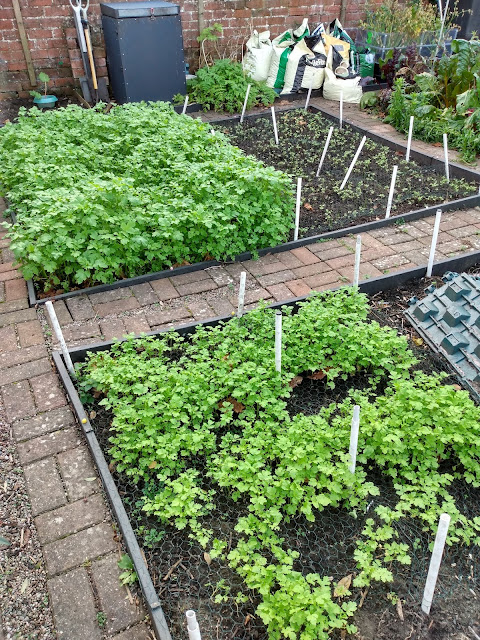Midsummer in the UK and what should be the warmest month of the year, July. See here for the link to June and earlier months.
July 2nd and clear evidence the grandchildren have been round; plastic tumblers and the table-top firepit has seen recent use. Front-of-house, the roses and hydrangea still going strong and the red dahlias are starting to show. The Paradise Garden is full of colour though not so easy to see from this point of view.
Here is a different view of the Paradise Garden: white campion and toadflax in the foreground with snapdragon, delphiniums, lilies, roses, geraniums, petunias, more lilies, foxgloves around the edge from left to right.
Mid-July and it's time for a tea party with Mary's band so the gazebo goes up to provide some shade. Temperatures reached 32 ℃ on a hot sunny day with high UV Index so shade was essential.
In contrast, the end of the month (July 30th) finished much cooler (high temperature 18 ℃), wetter (9.2 mm) and windier. The buddleia (aka summer lilac and butterfly bush) in the Paradise garden is now flowering although this was not a day for butterflies.
The monthly weather summary for July 2021 from our Davis Weather Station is tabulated below. Warm and wet at the beginning and end of the month with a hot, dry period in the middle.
July 2021 (2020) |
Weather Parameter | Value | Dates |
Average Monthly Temperature | 19 oC (17 oC) |
|
Maximum Monthly Temperature | 34 oC (33 oC) | 18th, 20th |
Minimum Monthly Temperature | 11 oC (7 oC) | 9th |
Number of Air Frost Days | 0 (0) |
|
Number of Hot Days (> 25 oC) | 17 (7) | 1st, 2nd, 8th, 12th - 23rd,, 25th, 26th |
Monthly Precipitation | 71.2 mm (32.4 mm) |
|
Greatest 24 h Precipitation | 14.8 mm (9.6 mm) | 27th - 28th |
Number of Dry Days | 19 (20) |
|
Monthly Sunshine Hours (estimated) | 204 (178) |
|
Average Wind Speed | 3 km/h (4 km/h) |
|
Highest Wind Speed | 35 km/h (43 km/h) | 6th |
Maximum Barometric Pressure (Sea Level) | 1030.7 hPa (1030.1 hPa) | 17th |
Minimum Barometric Pressure (Sea Level) | 993.0 hPa (1000.3 hPa) | 6th |
Average Barometric Pressure (Sea Level) | 1014.8 hPa (1009.7 hPa) |
|
Globally, July 2021 was one of the
hottest months on record though its exact position depends on which global temperature data set you use. It was the second warmest July in
Europe and equal fifth for the
UK. For the Met Offices's weather station at
Ross-on-Wye, it was the fourth warmest since 2000 (2006, 2013 and 2018 were warmer). My observations don't go back that far so all I can say is July 2021 in Hereford was above average warm. Worryingly, July 2021 falls within the cooling cycle (La Nina) of the El Nino Southern Oscillation, as shown by the Oceanic Nino Index (
ONI), so temperatures were suppressed and it could have been much warmer both locally and globally.




















